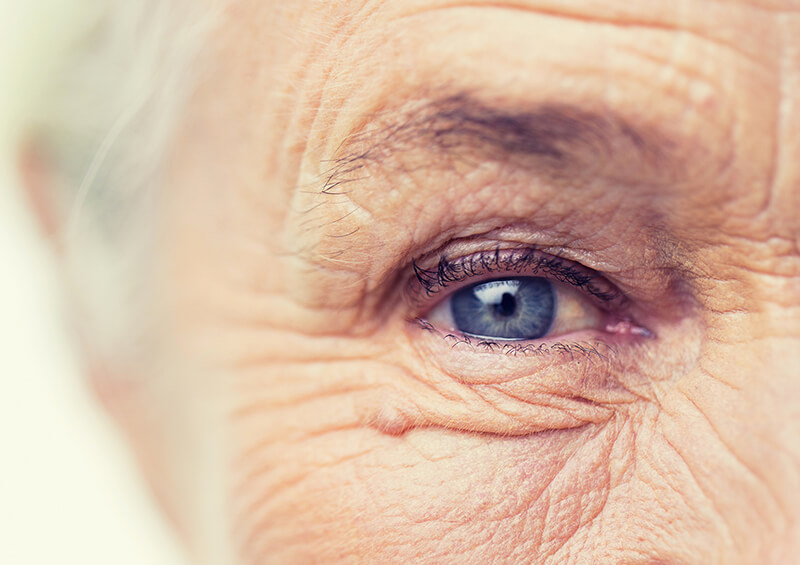How Your Vision Changes with Age
Changes in eyesight are a natural part of getting older. Even those who have had perfect vision their whole lives may need glasses eventually. As you enter your 40s, 50s, 60s and beyond, it’s important to be aware of your eye health. And, preventative care is the key to sustaining quality vision. Read on to learn more about how vision changes with age.
Eyesight in Your 40’s
For many people, eyesight typically starts to decline between the ages of 40 and 60. Since changes tend to happen slowly, some don’t even realize they’re happening at first. The most common issue is called presbyopia. Presbyopia makes it harder to see details close up. For example, you might need to hold your book farther away than normal. You also might have trouble reading a computer or phone screen. Additionally, dim lighting can make it harder to see.

The good news is that presbyopia can usually be treated at this age. An optometrist can offer prescription eyeglasses or contacts to correct vision imparities. Certain individuals may also be eligible for laser surgery to restore vision.
- Problems with glare, especially when driving
- Changes in color perception
- Reduced tear production and dry eyes
- Seeing floaters and flashes
- Loss of side vision
- Seeing distorted images
Some of these issues occur due to the eye’s natural aging process. Others problems, like dry eyes, may develop as a result of hormonal changes. On the other hand, certain medical conditions, like high blood pressure and diabetes, can advance vision loss. Similarly, some medications may cause vision-related side effects such as blurred vision.
Eyesight for 60+ Years
Individuals who are in their 60’s and greater are most likely to experience vision changes. The most common issues include:
-
- Age-related macular degeneration (AMD): This decreases central vision which is used to see detail like letters, numbers, and to identify faces.
- Cataracts: The lens of the eye becomes cloudy which can lead to decreased vision.
- Dry eye: Decreased tear production that reduces vision clarity.
- Glaucoma: The “sneaky thief” of side vision, glaucoma is a disease of the optic nerve that can lead to total blindness if left untreated.
Because of vision changes, seniors may lose some independence. These changes can affect their ability to drive and interact with others. But, with help from an optometrist, there is hope for overcoming these issues. Specifically, low-vision rehab programs and special devices, such as magnifiers and telescopes, can help. And, special senior driving courses, large-print books, and brighter lights are useful too.
Take Care of Your Eyes
Most importantly, early detection is key and regular checkups are essential for protecting your vision. The American Optometric Association recommends seniors have at least one eye exam every year. A dilated eye exam will check eye pressure, fluid levels, anatomy, and other risk factors. However, if you notice changes or have concerns, tell your eye doctor immediately.
Whether you’re having vision trouble or just need a checkup, give us a call. Our experienced group of doctors will take good care of your eyes. Call 410-768-0202 or use the online scheduler to get started.
Share
